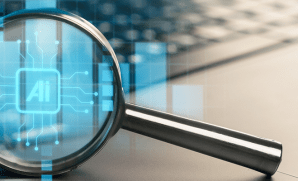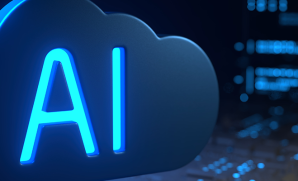Service Integration and Management: A Key Catalyst for Optimal Application Management Efficiency
Publish Date: July 2, 2024Despite its prowess in manufacturing, a global heavy equipment manufacturer struggled with maintaining efficient IT services due to its complex multi-vendor environment. It relied on various vendors for different IT services, resulting in a lack of coordination and alignment towards common business objectives. This led to frequent downtimes, unreliable service delivery, and an unstable IT environment.
Recognizing the need for a comprehensive solution, the company partnered with YASH Technologies, a Service Integration and Management (SIAM) provider, to streamline IT operations. The result of the partnership was transformative. The company experienced significant improvements in service availability, operational performance, and supplier SLA compliance. With enhanced real-time visibility into their IT environment, they could make informed decisions and proactively address issues before they escalated.
What exactly is SIAM, and how does it work?
Service Integration and Management (SIAM) is a management approach that can be implemented in an environment where multiple service providers are involved. Unlike traditional multi-sourced ecosystems with one customer and multiple suppliers, SIAM provides governance, management, integration, assurance, and coordination to ensure the customer organization gets maximum value from its service providers.
In simple terms, SIAM is a framework that enables the management of multiple IT service providers and their integration to provide a single business-facing organization. It is a modified version of ITIL with a specific emphasis on ensuring the smooth delivery of essential services by multiple suppliers to the rest of the business.
SIAM effectively manages the increasingly complex IT support ecosystem by combining services from different suppliers and integrating them into a unified IT unit. This approach is crucial as organizations adopt outsourcing, co-sourcing, and multi-sourcing strategies, ensuring effective service delivery without compromising quality.
Go for the Right SIAM Model for Effective Outcomes
Choosing the appropriate SIAM model is crucial and requires careful consideration of several factors before settling on the right approach.
Critical elements in choosing an SIAM model:
- For effectiveness, it is important to strike the right balance between in-house and outsourced provisioning.
- It is critical to define the methods and measures used, such as Master Service, Collaboration, Shared Service Level, and Operating Level Agreements.
- Selection of a SIAM provider (if appropriate), who is independent or able to provide services under the agreement.
Importance of SIAM for Application Management
Service Integration and Management (SIAM) is crucial for application management because it ensures a cohesive and efficient approach to handling diverse services and applications within an organization.
Optimized Service Delivery:
SIAM integrates various services seamlessly, streamlining service delivery and enhancing overall performance by reducing silos.
Enhanced Collaboration:
SIAM promotes collaboration among service providers and teams involved in application management. This leads to better communication, shared objectives, and an understanding of how applications support business goals.
Efficient Problem Resolution:
SIAM facilitates the prompt identification, assignment of responsibility, and quick resolution of issues, minimizing downtime and disruptions in a standardized and coordinated approach.
Cost Efficiency:
SIAM allows for better cost control by optimizing resource use and reducing redundancy. It helps avoid unnecessary service overlaps and ensures that resources are allocated effectively across the application landscape.
Agility and Flexibility:
SIAM enables businesses to quickly adapt to technological changes by seamlessly incorporating new applications and services, ensuring that the IT environment remains flexible and responsive.
Improved Governance and Compliance:
SIAM establishes a governance framework ensuring compliance with industry regulations in sectors with strict regulatory requirements.
Customer Satisfaction:
By improving the overall efficiency of service delivery, SIAM contributes to enhanced customer satisfaction. Applications work seamlessly, and issues are addressed promptly, leading to a positive user experience.
Risk Mitigation:
SIAM helps identify and manage risks associated with application management. Through standardized processes and clear roles and responsibilities, organizations can proactively address potential risks before they escalate.
Based on our experience, we see the following are the possible risks that organizations could face in a multi-vendor scenario, which could be addressed effectively using SIAM-based approach:
- Lack of Coordination: Without SIAM, organizations may struggle to coordinate IT services provided by multiple vendors or departments, leading to siloed operations, duplicated efforts, and inefficiencies.
- Complex Vendor Management: Managing relationships with numerous service providers can be challenging without a centralized framework like SIAM. Organizations may encounter difficulties negotiating contracts, monitoring vendor performance, and resolving disputes.
- Inconsistent Service Quality: The absence of standardized processes and governance mechanisms may result in variability in service quality across different IT functions, leading to inconsistencies in user experience and operational performance.
- Limited Visibility and Control: Without a centralized management approach, organizations may have limited visibility into their IT ecosystem, making it challenging to track service levels, enforce compliance, and manage risks effectively.
- Higher Costs: Inefficient service delivery models and fragmented governance structures can lead to increased IT costs without corresponding service quality or innovation improvements. Organizations may struggle to optimize costs and achieve value for money spent on IT services.
- Reduced Agility: Operating decentralizedly without SIAM can hinder organizational agility, making it challenging to respond quickly to changing business requirements, technology trends, and market dynamics.
- Compliance and Security Risks: Inadequate governance and coordination may expose organizations to compliance breaches and cybersecurity risks, especially in highly regulated industries where data privacy and security are paramount.
Recognizing the need for a holistic approach to IT service management, organizations can implement an SIAM framework to address the challenges mentioned above. Here’s how SIAM can help:
- Increase flexibility and responsiveness to changing demands by implementing a multi-supplier, multi-level governance approach.
- Avoid vendor lock-in and support deploying specialist solutions from niche providers that can quickly transform delivery.
- Enable alignment and integration of supplier service portfolios with organizational objectives, ensuring efficient service management orchestration and delivery underpinned by strong governance, integrated processes, and tooling solutions. This will lead to significant cost reductions and improved service performance.
- Remove complexity and fragmentation in the IT supply chain and refocus their retained IT functions on differentiation, such as how IT can support the organization’s strategy more effectively.
- Provide the ability to choose the best combination of specialist suppliers with flexible, variable-length contracts and promote closer, more collaborative supplier relationships rather than ‘arm’s length’ engagements.
- Flexibility to move many services to commodity-based ‘pay as you go’ provision and drive competition to ensure the best possible value for money. Greater transparency ensues as costs are not hidden within a sizeable end-to-end service charge, allowing scope for continuous innovation and improvement without re-tending.















